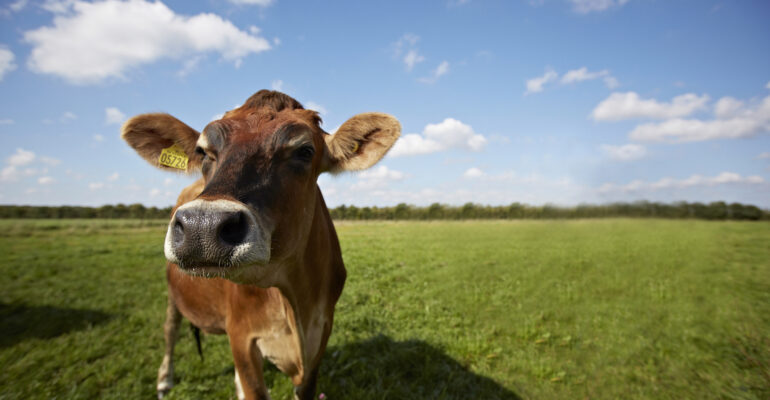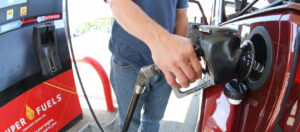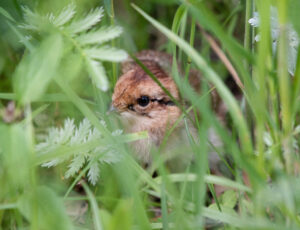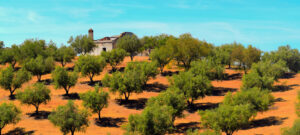Can biogas be green? Organic Denmark shows the way
By Lisa Benedetti, BirdLife Europe
Despite costing taxpayers more than 50 billion euro annually, and despite attempts to make it greener, the EU’s Common Agricultural Policy (CAP) still supports farming practices that dirty Europe’s waters, are hard on soils and threaten biodiversity. Even worse, in their implementation Member States often use the flexibility afforded to them to pick the least environmentally beneficial elements among available options. But Danish organic farmers are proving there are greener possibilities out there.
Rural Development, the second pillar of the CAP, still has strong potential to deliver for the environment. Even though Member States seem to have made the wrong choices in their programming, it’s not too late to improve things by supporting holistic practices that tick some boxes: water, soil, climate and biodiversity, while being good for farmers pocket books as well.
Organic Denmark has shown how this can be done through organic biogas production. Michael Tersbøl, agronomist and Development Manager of Organic Denmark, has been working with organic farmers for the last 25 years. Through their joint SUSTAINGAS project, they promote a philosophy which makes biogas a sustainable and green option for small scale farmers. Here’s what he had to say…
What is biogas?
A biogas tank is like a cow’s stomach, it’s able to digest things that humans can’t. It captures the gas released from the anaerobic digestion of biomass (crops, catch crops, food waste, and animal manure) and generates energy. The process also decomposes the organic parts of the waste and turns it into a dense nutrient rich substance which is a great fertilizer for soil and plants.
What is organic biogas?
Unlike conventional forms, organic biogas in Denmark must meet meaningful standards. Organic farmers in the country tend to use animal slurry, solid manure and leftovers from organic crop production. Sometimes they also need to use crops to supplement biogas production, but we encourage them to use alternatives to main energy crops.
What kind of crops are being used by Danish organic farmers?
In Germany and elsewhere, food crops like maize are being used for biogas. But using crops like these takes large areas of land out of food production and they often have a negative impact on soil quality and biodiversity. This controversy doesn’t really happen in Denmark because conventional and organic farmers aren’t using main crops for biogas, they only take up about 1.5% of the total volume of biomass used. This is because it’s cheaper and more convenient for farmers to use animal waste. The Danish Parliament also pushes farmers to use animal waste to minimize the use of main crops for biogas.
At the same time, there are crops out there that can be used for sustainable biogas. We ask our organic farmers to use clover-grass because of its ecological benefits in general and agronomical benefits in crop rotation. It can be used as fodder for cows, it helps improve soil integrity during crop rotation, and can also be used for biogas. It doesn’t compete with food production and enhances soil structure, showing that if biogas use follows a sustainable principle, it can be green as well as beneficial for farmers.
Why are Danish organic farmers turning to biogas?
Biogas digestate is attractive to organic farmers since they can’t use chemical fertilizers and biogas digestate offers an alternative and sustainable way to get good quality organic fertilizer to enhance soil fertility naturally when no other fertilizers are at hand. But the the truth is that the biggest force affecting any farmers decision are subsidy schemes. So far, farmers in Denmark have been turning to biogas because of financial incentives from the Rural Development Programme.
Have many organic farmers benefited from this scheme?
Organic farmers haven’t benefitted greatly because about 90% of the payments for biogas investment have gone to industrial scale biogas plants. So there aren’t many small organic farmers using biogas today. However, I know of 17 organic farmers who are interested in the potential of biogas. These are the types of farmers future funding schemes should benefit because of their efforts to make farming sustainable. Also, small organic farmers often join forces, so it really becomes a community effort. At the moment we are seeing a great interest from farmers in our current joint EU-project BioEnergyFarm, which is helping open the market for micro-scale digestion on farms.
Today, EU bioenergy policy doesn’t include sustainability criteria for biogas production – what’s your view on this?
Well, it’s surprising to me that EU policies are still turning agriculture in the wrong direction. I’ve barely seen any impact concerning greening. It’s time for the EU to change this. One way could be to reduce direct payments to 40% and target liberated funds towards public and greening measures. Before, most of the money has just gone to the big farmers and was not integrated into local communities. For example, RDP could support new infrastructure to create pipelines and a grid network for biogas. I know one farmer who has to transport slurry about 30 km to a biogas plant, and then 30 km’s back to use as fertilizer. Safeguards should also be put in place so that money targeted at greening/RDP measures are never offered to plough grasslands for maize or potatoes to be used in biogas plants. That situation is much different than rewarding farmers who use sustainable crops like clover-grass.
How much energy does a typical plant produce and how is it used?
The average is about 300 KW of electricity – using mainly slurry and solid manure. If farmers relied only on crops, about 300 hectares would need to be planted to produce the same amount of energy. The power generated is usually used for combined heat power generation to heat homes and workshops, and in some cases to dry wood/hay. This may not be the most efficient use, but energy production isn’t the main purpose for organic biogas in Denmark, it’s to produce fertilizer.
Any other thoughts?
We encourage local commitment and collaboration with organic biogas. It’s great to see farmers working together, benefitting from organic farming while staying in harmony with nature as much as possible. It’s the philosophy of this project and Organic Denmark.
Photo credit: Cow in Danish farmers field (c) Organic Denmark





